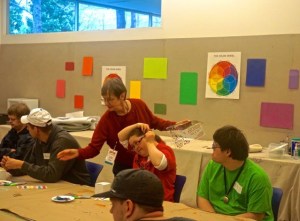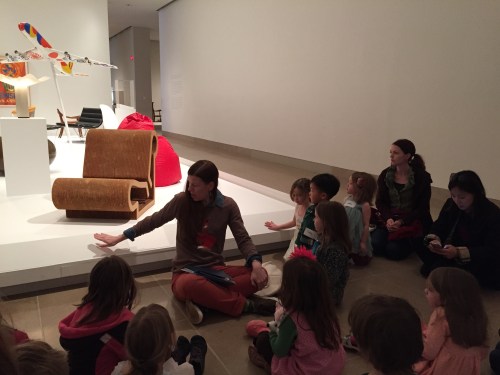One of the annual projects for the McDermott Curatorial Intern for European Art is to develop and curate a small exhibition pulled from the DMA’s works on paper collection. Of the pieces within the European collection (which includes over 1,500 works!), I was immediately drawn to ones by old masters (artists working before 1800), like Rembrandt van Rijn, Giovanni Battista Piranesi, and Francisco de Goya. I found the work by German artist Albrecht Dürer (1471-1528) to be particularly fascinating, and I chose fourteen of his prints for the exhibition Saints and Monsters: Prints by Albrecht Dürer, which focuses on Dürer’s depiction of both the religious and the monstrous.
Dürer was a prolific artist working in the Northern Renaissance who revolutionized the field of printmaking through his original iconographic models, dynamic compositions, and skill in capturing details. Today he is widely hailed as one of the greatest printmakers of all time; however, since these prints are so tiny (those included in the exhibition measure only about 3 x 5 inches), it can be difficult to appreciate Dürer’s printmaking prowess in the galleries alone. To supplement your gallery experience, I thought I might share a few details from one of my favorite works in the exhibition, St. George on Foot.

Albrecht Dürer, St. George on Foot, c. 1502-c. 1503, engraving, Dallas Museum of Art, bequest of Calvin J. Holmes
This engraving portrays St. George, a 3rd century military saint and martyr associated with his mythical slaying of a terrorizing dragon, the moment of which is depicted here. With a closer look, we can find some of the finer details that may otherwise be difficult to see in the gallery.

Albrecht Dürer, St. George on Foot (detail), c. 1502-c. 1503, engraving, Dallas Museum of Art, bequest of Calvin J. Holmes
Here we see St. George’s sensitively rendered expression as he looks off into the distance. Tendrils of hair escape his hairnet, evidence of the recent struggle between man and beast, while his beard and mustache are made of distinct curls. Framing St. George’s face is a spontaneously sketched halo, designating his holiness. Notice how Dürer was able to capture the volume and texture of the saint’s suit of armor through hatching and crosshatching, representing his remarkable ability to represent the metallic qualities of armor.

Albrecht Dürer, St. George on Foot (detail), c. 1502-c. 1503, engraving, Dallas Museum of Art, bequest of Calvin J. Holmes
The defeated dragon lies belly-up at St. George’s feet. This position makes the dragon appear especially grotesque with its open eyes, bared teeth, sharpened claws, pointed nose, and spiked wings. The monster’s neck and tail are marked with wounds created by St. George’s sword. During the 16th century, many Europeans believed dragons were real, so Dürer’s dragon both emphasizes St. George’s courage in fighting the beast while also instilling fear of the evil and unknown into viewers.

Albrecht Dürer, St. George on Foot (detail), c. 1502-c. 1503, engraving, Dallas Museum of Art, bequest of Calvin J. Holmes
Behind St. George, Dürer renders a village and harbor, which reminds us of the people George protected by slaying the dragon. The trees and buildings in a sinuous line appear as if they are floating on the water’s surface. The divide between land and water is ambiguous, and Dürer only implies land, shadow, water, and wave through simple hatch and crosshatch lines.

Albrecht Dürer, St. George on Foot (detail), c. 1502-c. 1503, engraving, Dallas Museum of Art, bequest of Calvin J. Holmes
Following his victory, St. George cast off his helmet, which holds an elaborate arrangement of lush feathers. The extravagant plumes contrast with the metallic gleam of the saint’s armor and the coarseness of the dragon’s flesh. In the lower left corner is Dürer’s distinctive signature of his initials, “A.D.” With a careful eye, you can find Dürer signatures in each of the prints included in Saints and Monsters.
I hope that with this closer look you will better be able to appreciate Dürer’s virtuosity in the print medium and ability to utilize shadow, texture, and form to convey drama and emotion. Come see this work and more in Saints and Monsters: Prints by Albrecht Dürer, currently on view in the European Works on Paper Gallery, located on Level 2 and included in the Museum’s free general admission.
Laura Sevelis is the McDermott Curatorial Intern for European Art at the DMA.































































